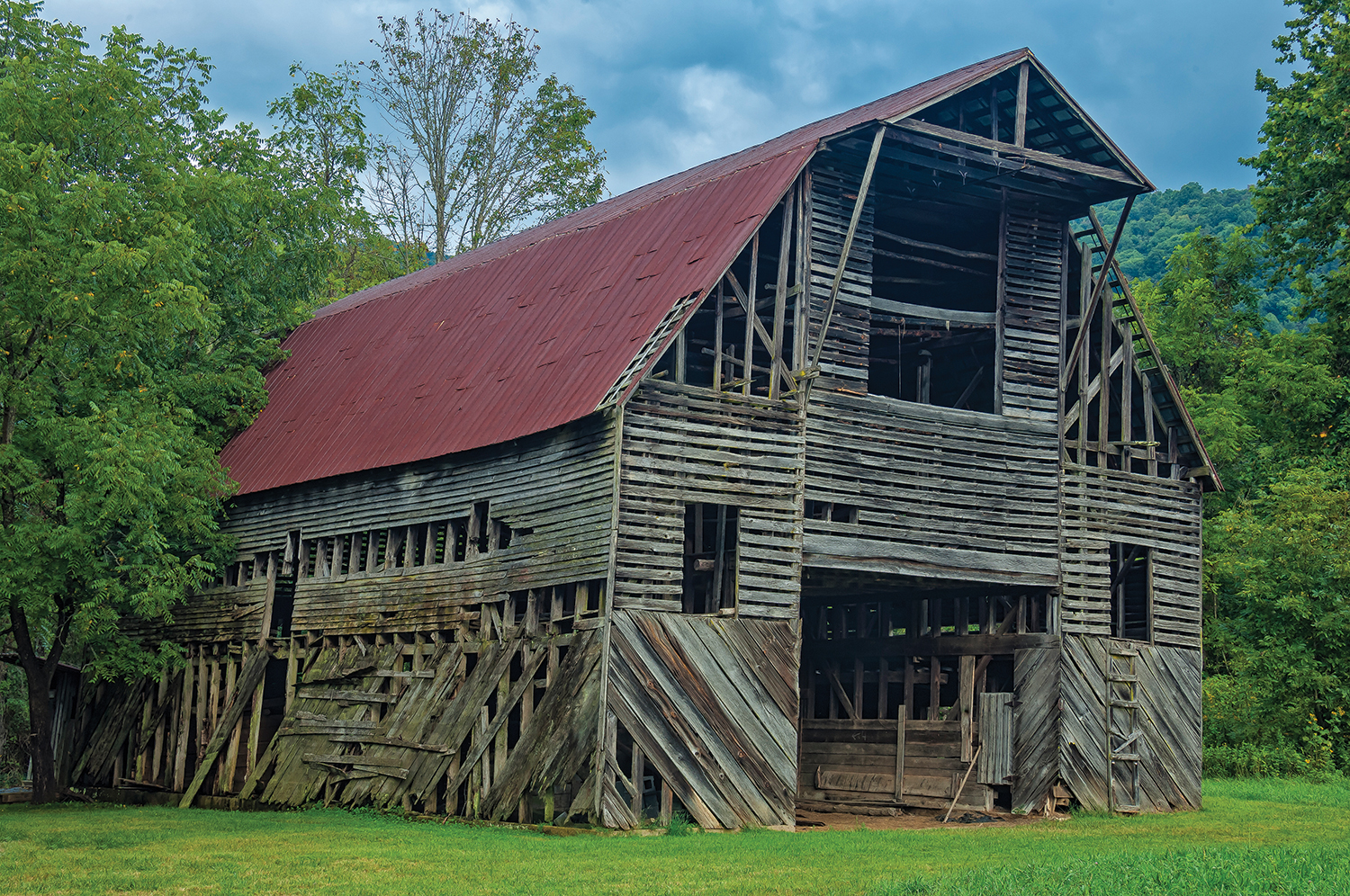
For the Rural Heritage Museum’s newest exhibit, Shelter on the Mountain: Barns and the Building Traditions of the Southern Highlands, director Les Reker and his team spent a year researching the past several thousand. The show at Mars Hill University explores the evolution of construction in the region, from the daub-and-wattle shelters of the AniKituhwa — the ancestral group of Cherokee who were there when the Spanish arrived in the 1500s — to the Craftsman homes of the 1920s. But the display most prominently features WNC’s quintessential tobacco barns, which played a pivotal role in shaping our economy through 2004 — when the Federal Tobacco growing subsidies ended — and still dot our landscape today.
In fact, Reker describes the amount of data collected by museum researchers as “overwhelming.” But as a result, he says, he’s certain no one will walk away from the show without having learned a great deal. Not only is the timeline of the exhibit broad, so too is its definition of “shelter.” In addition to discovering the area’s homes and barns, visitors will learn about buffalo trails, the Drovers’ Road, the Buncombe Turnpike, and today’s remnants of these important paths. More than 70 photos will be revealed for the first time.
A majority of the accompanying relics on display are log-shaping tools, which help tell the story of European settlers’ dogged perseverance as they sought to transform the unforgiving mountains into a land of promise. Using carts and draft horses, they lugged lumber out of and down the mountain. They chipped and shaved away with broad axes and other instruments to turn logs into beams — at least, until the sawmill came to town.
Then, they rallied their friends and family to raise those beams, including chestnut logs more than 40 feet long weighing a ton each, upwards of 30 feet or more to construct the buildings that would house their livestock, crops, and often themselves.
Sometimes they built vertically, a remnant of the indigenous technique, and sometimes horizontally, a style that came to WNC via Northern European immigrants, with origins in Russia and China.
Barn engineering, stresses Reker, “was really quite a feat.” It’s one reason he’s saddened to see so many historic barns in disrepair. Madison County Cooperative Extension estimates 10,000 are still standing in some fashion; however, “barns are endangered,” he says plainly, adding that people tend to take them for granted. He hopes viewers will walk away with a newfound interest in the agricultural structures, and perhaps a desire to restore them to their former glory, not tear them apart for trendy, decorative uses.
“If you can fix up the roof, you can preserve a barn.”
Shelter on the Mountain: Barns and the Building Traditions of the Southern Highlands is on view at the Rural Heritage Museum (at Montague Hall on the Mars Hill University campus) 11am-5 pm, Tuesday through Sunday, through May 28. See www.mhu.edu/museum for more information.
